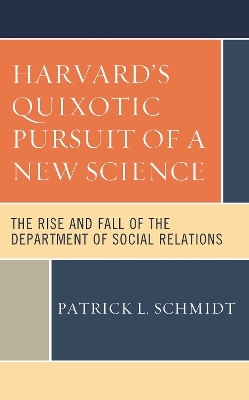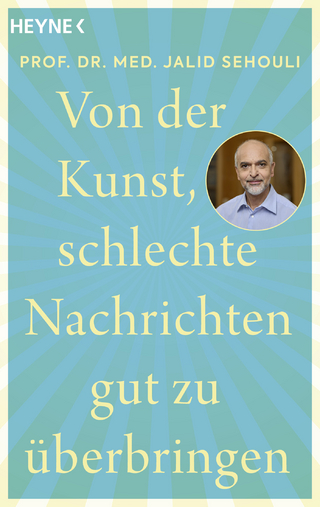
Harvard's Quixotic Pursuit of a New Science
Rowman & Littlefield (Verlag)
978-1-5381-6829-5 (ISBN)
The idea for Social Relations was hatched in the 1930s. Scorned by traditional interests in their Harvard departments, rising faculty stars in anthropology, sociology and psychology fled their oppressors, seeking to create not merely a new department but a new social science. The refugees were Talcott Parsons, Gordon Allport, Henry Murray, and Clyde Kluckhohn. They promised an interdisciplinary science that would supplant the elder social sciences of history, government, and economics in its ability to explain human behavior. An audacious aspiration, critics found it as imperious as it was implausible.
Inspired by the new and controversial works of Sigmund Freud, Carl Jung, Max Weber and Emile Durkheim, the group met clandestinely to plot the bold venture, giving their efforts a conspiratorial air. They called themselves the “Levellers” in recognition of the many levels they believed the study of behavior required. Their big break came when their vision was legitimized by interdisciplinary research during World War II by the Research Branch of the War Department and the Foreign Morale Analysis Division of the Office of War Information. Government agencies employed teams of clinical and social psychologists, cultural anthropologists, and sociologists to study issues important to the war effort, such as assessing the morale of the Japanese, as well as the spirit of our own troops.
Twenty-five years later, some at Harvard referred to it facetiously as the Department of “Residual” Relations. The grand experiment had run its course. Failing in its early years to develop a unified theoretical foundation, Social Relations was unwieldy, more multidisciplinary than interdisciplinary. It became a three-ring circus with distinct acts from psychology, sociology, and anthropology. After an early burst of enthusiasm from faculty and graduate students to create a new discipline, hopes faded. The single most ambitious attempt to integrate its component disciplines, the Carnegie Project on Theory and its work product, Toward a General Theory of Action, missed the mark. Without an integrated theory, the department failed to create “social relations” as a new science.
The saga engendered controversies that became national, even international, scandals. From the psilocybin “research” of Timothy Leary and Richard Alpert to the infiltration of the teaching staff of the department’s (and one of Harvard’s) largest courses by the radical Students for a Democratic Society, fierce arguments raged about what was a proper subject or method of inquiry and just how far academic freedom should extend.
Patrick L. Schmidt is an attorney and executive with diverse experience in Latin America and the Caribbean in the areas of renewable energy, finance, real estate, tourism, and infrastructure. He is the author of journal articles and commentary on international law and foreign policy issues including U.S. foreign aid, international human rights, internally displaced persons, and renewable energy in the Caribbean. Schmidt attended Harvard University as an undergraduate where he wrote on the topic of Harvard’s Department of Social Relations in his 1978 senior honors thesis in Harvard’s Department of Psychology and Social Relations, the successor to the Department of Social Relations. As part of his research, he interviewed 26 of the faculty members who played a role in the department’s history, including founders Talcott Parsons and Henry Murray, and critics in the Psychology Department, such as B.F. Skinner, who closely observed the rise and fall of Social Relations.
Preface
Acknowledgments
Chapter 1Freud Arrives at Harvard: Disrupting the Disciplines
Chapter 2Word War II Changes Everything: Interdisciplinary Research Emerges
Chapter 3The Founding of the Department of Social Relations: A Determined Dean Acts
Chapter 4The First Five Years: A Golden Age but Integration Proves Elusive
Chapter 5The 1950s: A Decade of Disunity and Disappointment
Chapter 6The 1960s: Drugs and Departmental Drift
Chapter 7The Final Unraveling: Soc Rel 148-149 Disrupts and Sociology Departs
Chapter 8Conclusion and Summary
Index
| Erscheinungsdatum | 07.06.2022 |
|---|---|
| Verlagsort | Lanham, MD |
| Sprache | englisch |
| Maße | 148 x 225 mm |
| Gewicht | 354 g |
| Themenwelt | Geisteswissenschaften ► Psychologie ► Sozialpsychologie |
| Sozialwissenschaften ► Ethnologie ► Völkerkunde (Naturvölker) | |
| Sozialwissenschaften ► Pädagogik ► Allgemeines / Lexika | |
| Sozialwissenschaften ► Pädagogik ► Erwachsenenbildung | |
| ISBN-10 | 1-5381-6829-4 / 1538168294 |
| ISBN-13 | 978-1-5381-6829-5 / 9781538168295 |
| Zustand | Neuware |
| Haben Sie eine Frage zum Produkt? |
aus dem Bereich


